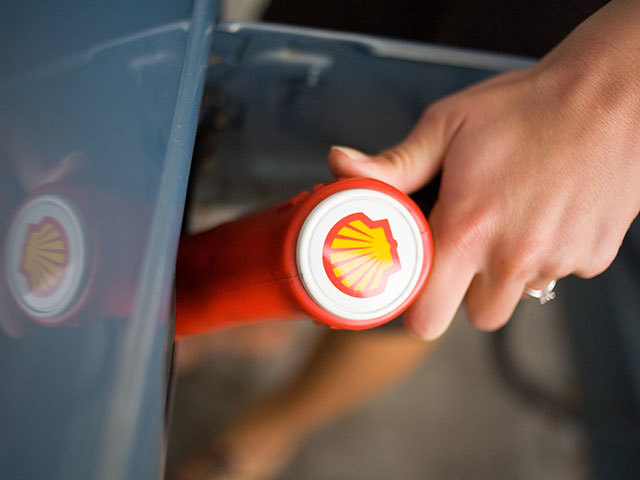
As they guided Europe’s largest oil companies through the industry’s worst slump in two decades, the bosses of Royal Dutch Shell Plc and BP Plc had a simple message for investors: we’ll protect the dividend at all costs.
Not everyone is convinced they’ll be able to keep their word. Even after they raised billions of dollars by cutting costs, selling assets and adding debt, cash is pouring out of both companies in the form of hefty shareholder dividends. Yields on those payments — which fell through 2016 as crude started to recover — have risen this year, typically a signal that investors fear a cut in payouts.
“BP and Royal Dutch Shell have unsustainable dividends,” Neil Woodford, head of investment at Woodford Investment Management Ltd. who manages about $20 billion, wrote in a blog. “These companies are liquidating themselves rather than facing up to the need for a dividend cut. The only thing that can save them from that eventuality is a return to sustainably higher oil prices -– something that I think is very unlikely to happen.”
BP shelled out $4.6 billion in cash dividends last year, on top of $16 billion in capital spending, according to a presentation last month. It failed to generate enough cash from operations to match that outlay. Shell’s cash also fell short as project spending reached $22 billion and cash dividends $9.7 billion.
While crude rebounded more than 50 percent in 2016, prices have since slid this year as U.S. production and inventories climb. Global benchmark Brent traded at $52.48 a barrel at 2:03 p.m. Singapore time. The price decline has weighed on the shares of Europe’s majors, with London-based BP down 9.5 percent this year and The Hague-based Shell losing 5.4 percent.
This week BP’s dividend yield — the annual return divided by the share price — rose to the highest this year. It’s now at 7.1 percent, compared with 6.2 percent at the end of 2016. Shell’s yield has risen to 6.5 percent from 5.9 percent.
Payout Priority
Dividends from Big Oil have been in the spotlight since crude’s 2014-2015 slump decimated cash and profits. Shell and BP have long deemed the payouts sacrosanct — Shell hasn’t cut its dividend since at least the Second World War — and have increased debt and sold assets to show investors that payments will be maintained. Yet some competitors have caved in.
Italian peer Eni SpA capitulated when its dividend yield was 7.2 percent, becoming the first major oil company to reduce its payout in 2015. Spain’s Repsol SA followed, cutting its final 2015 dividend when it was yielding 8.8 percent. The average yield for the U.K. benchmark FTSE 100 index is currently 3.83 percent.
Shell Chief Executive Officer Ben van Beurden said earlier this year that free cash flow “more than covered our cash dividend” in the last quarter and “there is no change in the dividend intention.” The company declined to comment beyond that statement this week.
BP also declined to comment. In February, CEO Bob Dudley said the dividend remains a top priority and BP is “sustaining and strengthening” the payout.
Investors Unconvinced
“The companies have spent a lot of time trying to convince shareholders about the dividend but not everyone believes them,” said Iain Armstrong, an analyst at Brewin Dolphin Ltd., which owns BP and Shell shares. “If and when oil goes to $60, people will really start to believe the dividend is safe.”
BP’s Dudley has spent most of his six-year tenure divesting assets, but BP went on a spending spree at the end of 2016 — taking in assets around Africa and the Middle East — which will result in a cash shortfall this year if oil stays below $60 a barrel.
Both BP and Shell have grappled with debts as they stick doggedly to their dividends. BP’s ratio of net debt to capital rose to 26.8 percent at the end of 2016 from 21.6 percent a year earlier. At Shell, additional borrowing for its $54 billion acquisition of BG Group Plc pushed the ratio to 28 percent at the end of 2016 — more than double the year-earlier level.
Total’s Confidence
Not all Europe’s oil majors are feeling the same pressure. French peer Total SA said Feb. 9 it should be able to fund operations and cash dividends at $50 a barrel this year — $5 lower than its previous estimate. It also plans to increase its dividend by 1.6 percent after reporting a 45 percent jump in fourth-quarter cash from operations. Total’s dividend yield is 5.3 percent.
While indicating increased risk, a high dividend yield can be an opportunity to lock in returns for investors confident that the companies will maintain payouts, Brewin Dolphin’s Armstrong said. For comparison, the return on U.K. benchmark 10-year bonds is 1.16 percent and on Germany’s, 0.35 percent.
During the market downturn, Shell, BP and Total have all made use of scrip dividends — offering investors payouts in shares — helping them to preserve cash as they battle to reduce debts. Yet scrip payouts dilute earnings per share and don’t necessarily rule out a dividend reduction if crude remains depressed.
“The oil majors are an unattractive investment proposition while the threat of a dividend cut hangs over them,” Woodford said.
Recommended for you
